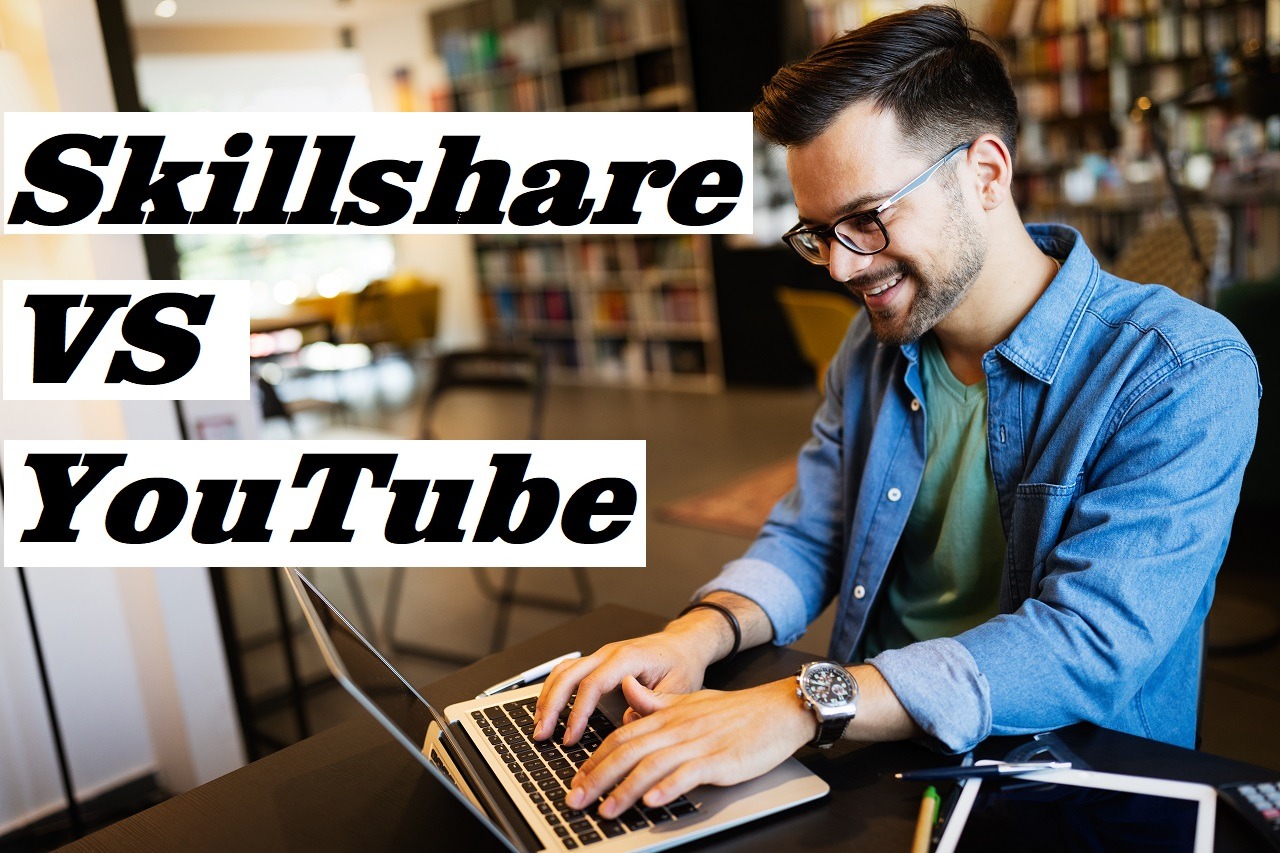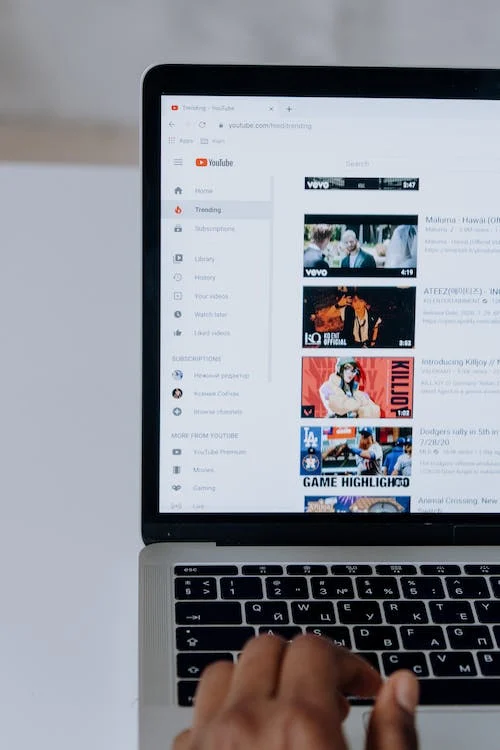Never before had the internet had such an amazing way for people to learn things online. Sure, for years a lot of learning courses offered subscription based skills that you could purchase out of a catalogue – such as the Great Courses Plus being in business since the late 70’s – but never before had it been so accessible to a lot of people so easily.
Right now, two of the biggest ways that people learn is through both accessing YouTube, and the amazing Online Learning platform Skillshare. Both of which offer a different way to learn while also being different enough from one another.
In fact, let’s quickly take a look at the two and compare and contrast them both with what they offer people and the advantages and disadvantages that come with using them for learning skills and subjects. That way you can see for yourself what each platform offers you.
YouTube
Right off the bat we can see what YouTube biggest advantage is over Skillshare; the fact that it’s free, and completely usable without even needing an account to access its content. Sure, you have YouTube T.V and it is a subscription based platform that requires an access, but the majority of the content that most people are interested in is completely free, and viewable by just using the search bar. Plus, as I said, you don’t even NEED an account to use it.
Though an account is good if you like to have a more accurate algorithm that helps get you the content you like to watch a lot easier with tier recommendations. Sure, the algorithm isn’t the most reliable or perfect system in play, but it serves well enough to get you what you need.
Plus, best of all, there is just SO much content that’s out there that you can easily lose yourself just trying to get to it all. Every day new channels are being created all based on various different subjects that you can learn from, and even older channels that get established start to get higher and better production values: Meaning that there’s always something new and exciting to watch.
The disadvantage of YouTube though? Well, the fact that it’s free. While that is an advantage, it is a double edged sword because with that free quality means that they’re entirely beholden to clicks and attention to their channel and anything that you learn from that channel might be inaccurate, or designed to just keep you around with little to no help in learning. So quality will vary from topic to topic, and you won’t get everything you need out of just the videos alone.
Plus, not only that, but YouTube ISN’T a dedicated learning platform as well. Sure, a lot of channels and videos might have additional resources that you can click on for additional learning (or work with other YouTube channels for collaboration), but more often than not all the videos do is present the knowledge and expect you to pick it up on your own.
So this means no worksheets, no additional reading material or resources, no outside extra credit work, and no downloadable content.
Not only that but the lessons and such you could learn aren’t curated and based off of how helpful they are as well. YouTubes platform isn’t about teaching you, but about having videos and getting eyes to watch to the end for their advertisers.
Well, then, with that said let’s take a look at the advantages and disadvantages of SkillShare then.
Skillshare
SkillShare is a platform that is specially designed around the concept of Online Learning. To access many of its courses, you simply need to create an account with them and purchase a monthly subscription plan. There are over 20,000 courses spread through dozens of different skills that you can pick up if you pay the $15 a month, though if you’re on a limited budget – or just want to try it out for yourself – there is a free option that still gives you access with a little over 2,000 classes to take.
Now, what are some of the advantages of the platform?
Well the most obvious one is that while you do pay for the premium content, it’s entirely designed to work around you and your pace. You don’t just get video’s that detail whatever it is you want to learn: You get entire courses designed around it that come with workshops, QnA’s, feedback, additional reading resources and more that are all designed around you learning the class and retaining whatever it is you learn.
This is amazingly powerful, and while SkillShare can’t be a replacement for a formal education or training, it can at least help you start to self-improve yourself at your own pace since there are NO deadlines to the courses. You can take them whenever you want, and even repeat them again if you so desire.
So what are the disadvantages then?
The biggest drawback to Skillshare is the fact that it does cost money. This means that if you’re a slow learner, or don’t have the time, then you’re paying for a lot more than you would be if you had just paid for the classes up front for a small fee, or gotten it for free.
Another big downside to Skillshare is the fact that it’s not curated to include educational or entertainment options. Sure, you can follow your favorite Skillshare authors and Coursework people and find out what other skills they offer and classes they have, but they don’t have dedicated channels that are devoted for those subject; so you might get one or three courses on a subject, and that’s it as opposed to a YouTube channel offering dozens of videos that go in depth on the subject or skill.
Which is Better For Online Learning?
When comparing the two online sources, Skillshare and Youtube, each has pros and cons. While Youtube is free, you will need to pay a flat $10 monthly fee on Skillshare to be able to access the classes, but they have flexible plans available, which makes for a great deal. You can pay annually or monthly. However, if you are on a budget, YouTube is the way to go because it is free.
The reason why youtube is free is because of its ad scheme, which allows there to be ad placement in between your video. The more ads you watch, the more you can earn from your video, but as a student, you may find ads distracting. If that is the case, then you should definitely opt for Skillshare, as there are no ads or distracting links.
The ad scheme also creates competition among creators, meaning you are likely to find a variety of videos on the same subject. That can be considered a pro and a con because you can switch to another if you don’t understand how one teacher is teaching. However, this may also cause confusion as there is no check and balance, so you never know whether the teacher is teaching the concept correctly or not.
In such cases, Skillshare trumps youtube because it focuses on creating high-quality online courses, so the instructors must pass a test to become certified. Additionally, they receive training and mentorship.
The Benefits of Online Learning
With the rise of technology, many teachers have started taking their lessons online because it allows them to avail the many benefits of online learning, such as the ones listed below.
Flexibility
One of the greatest advantages of online education is the flexibility it offers. You no longer need to be physically present at a particular place. You can take your classes anywhere you feel comfortable and decide a time that suits you best.
Reduced Costs
Education can be expensive but virtual learning allows you to save money in a number of ways. You don’t need to pay for transportation, physical books and other expenses that come with attending a physical school. Additionally, tuition costs are generally lower for online programs as compared to on-campus programs.
Conclusion
All in all, your mileage will vary between the two in terms of how they approach the different subject matter. Which one is better is actually sort of a hard question to answer because the concepts of learning are so different on each that it’s not uncommon for people to simply pay for a Skillshare account and then learn on both it and YouTube to round out their online education.
So no matter what platform you use, you still win in the end.




